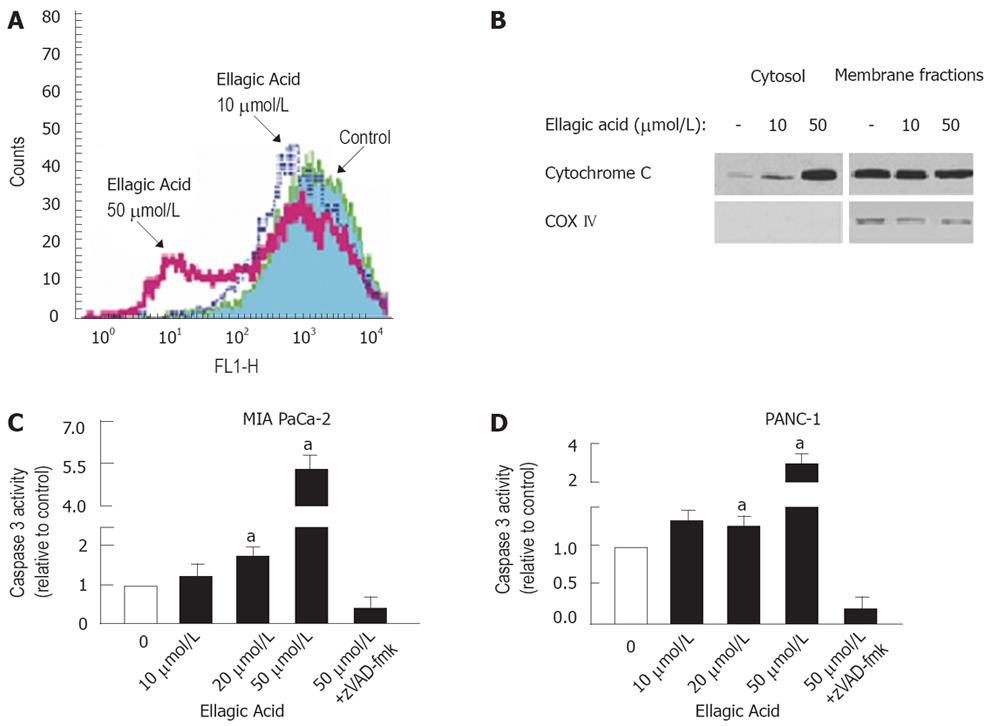Copyright
©2008 The WJG Press and Baishideng.
World J Gastroenterol. Jun 21, 2008; 14(23): 3672-3680
Published online Jun 21, 2008. doi: 10.3748/wjg.14.3672
Published online Jun 21, 2008. doi: 10.3748/wjg.14.3672
Figure 3 Ellagic acid induces loss of mitochondrial membrane potential, cytochrome C release, and caspase-3 activation in pancreatic cancer cells.
MIA PaCa-2 (A-C) and PANC-1 (B) cells were cultured for 48 h in the presence or absence of indicated doses of ellagic acid or broad-spectrum caspase inhibitor zVAD-fmk (100 &mgr;mol/L). A: Changes in ΔΨm were measured by flow cytometry using the potential-sensitive probe 3,3’dihexyloxa-carbocyanine DiOC6 (3); B: Cytochrome C release was assessed by measuring cytochrome C levels in both cytosolic and mitochondria-enriched membrane fractions using Western blot analysis. Blots were re-probed for cytochrome C oxidase (COX IV), a specific mitochondrial marker. Western blots of cytosolic fractions re-probed for actin to confirm equal protein loading; C and D: Caspase-3 activity was assessed by measuring the DEVDase (caspase-3 like) activities in cell lysates using a fluorometric assay with a specific substrate. The results are representative of at least 3 independent experiments. Values are normalized to control (C and D). Values are mean ± SE (n = 3), aP < 0.05 vs control.
- Citation: Edderkaoui M, Odinokova I, Ohno I, Gukovsky I, Go VLW, Pandol SJ, Gukovskaya AS. Ellagic acid induces apoptosis through inhibition of nuclear factor κB in pancreatic cancer cells. World J Gastroenterol 2008; 14(23): 3672-3680
- URL: https://www.wjgnet.com/1007-9327/full/v14/i23/3672.htm
- DOI: https://dx.doi.org/10.3748/wjg.14.3672









